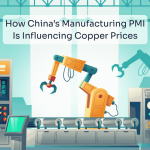Worldwide, stock market pundits are offering a near unanimous prognosis for equity in 2019—volatility coupled with nominal gains of single digit, at best.
Speaking about India, it is likely to be a year of PE contraction and perhaps muted institutional flows. Earnings expectations carry a huge burden on their shoulder. Should they fall short of expectations, markets might witness topsy-turvy movements.
For the Nifty50, most forecasts suggest 11,000-11,500 levels by end-2019. A general view is that the Indian market is trading at 16-17x one-year forward earnings. This translates into a 10-11% premium over the past decadal average. And hence, the possibility of further re-rating (PE expansion) looks dim. The upcoming Sino-US trade talks and Lok Sabha polls add an additional dimension of uncertainty.
2019: Another year of P-E contraction?
On this backdrop, we back-tested Quarterly-Rolling Returns (QRR) of Sensex to understand how the primary drivers of the market—earnings growth/de-growth and PE Expansion or compression, as the case may be, might behave in times to come. Also, we analysed the impact of trends in institutional flows on market returns.
The analysis for the period between March 2000 and December 2018 (226 data points) threw up some interesting observations. ^
What translates into positive Quarterly Rolling Returns?

(Data source: Bloomberg, CDSL, Ventura Securities, Moneycontrol)
Of the 226 quarterly observations over the period, in 134 (59%) the QRR of the Sensex was positive. Of these 134 instances, in 120, positive earnings growth was an underlying contributor whereas in 14 instances the Sensex QRR moved up, despite earnings de-growth.
The earnings growth has been the predominant driver of the Sensex. Besides, in 127 (of the 134 positive return observations), net institutional flows (FII+DII) were a source of support.
There are 49 instances of negative earnings trajectory, despite which, in 14 cases the Sensex QRR was positive. A few of these 14 coincide with the tail end of both the dotcom meltdown (2000-01) and the financial crisis (2008-09) while 9 occurred between mid-2015 and mid-2017 when PE rerating was at its zenith on the back of record institutional (DII+FII) net inflows. In other words, strong institutional inflows sometimes shun the sluggish earnings growth but in the absence of earnings playing the catch up, markets correct.
Similarly, there are 111 instances of PE compression, of which 26 are in the 2014-2018 period. Further, in only 25 (of the 111), the QRR was positive.
Slicing the data differently, there are 187 instances (out of 226) of positive institutional flows. However, in 60 of these, the Sensex gave negative returns. This implies that the institutional flows can’t be an Atlas to hold up the markets always.
Diving deeper, of these 60 in 22 instances the earnings trajectory was of de-growth. In other words, there are 38 instances of positive institutional flows & positive earnings trajectory YET the Sensex return was negative mainly due to PE compression.
It’s noteworthy that of these 38 instances, 12 represent the pre-LS poll / immediate post poll months of the 2004, 2009, 2014 elections. A similar PE compression is also noted in November 2018 and December 2018, despite a positive earnings trajectory and a reasonable quantum of net institutional inflows.
In summary, market behaviour in the period till Lok Sabha election results announcement (in May 2019) could be driven more by earnings trajectory than institutional flows.
Volatility may be rising simply because investors must digest more information (often non-harmonious) every day—Alex Berenson (award winning business investigative journalist)
^ Since we are considering Quarterly rolling data wherein quarterly observations can be drawn every month, we are getting 226 data points.
Disclaimer:
We, Ventura Securities Ltd, (SEBI Registration Number INH000001634) its Analysts & Associates with regard to blog article hereby solemnly declare & disclose that:
We do not have any financial interest of any nature in the company.
We do not individually or collectively hold 1% or more of the securities of the company.
We do not have any other material conflict of interest in the company.
We do not act as a market maker in securities of the company.
We do not have any directorships or other material relationships with the company.
We do not have any personal interests in the securities of the company.
We do not have any past significant relationships with the company such as Investment Banking or other advisory assignments or intermediary relationships.
We are not responsible for the risk associated with the investment/disinvestment decision made on the basis of this blog article.

Time to cherry-pick companies that use metals as their raw materials?
5 min Read Jun 25, 2022
Why is palm oil making the headlines nowadays?
5 min Read May 21, 2022
Renewable energy: beating the market blues with green
4 min Read Dec 16, 2021
Are internet stocks all set to break the internet?
4 min Read Jul 14, 2021
Decoding the world’s love-hate relationship with China
4 min Read Jun 4, 2021
Top 10 AMCs in India
3 min Read Jan 6, 2026
Market outlook 2026: Essential Do’s and Don’ts for Successful Investing
3 min Read Jan 2, 2026
China Manufacturing PMI at 50.1 Signals Stabilisation, Copper Prices Rally
3 min Read Dec 31, 2025
F&O Lot Size Changes in India: What Traders Need to Know (Effective Jan 2026)
3 min Read Dec 31, 2025
Revisiting the Gold-Silver Ratio Amid Silver's Outperformance
3 min Read Dec 22, 2025
Post your comment
You must be logged in to post a comment.